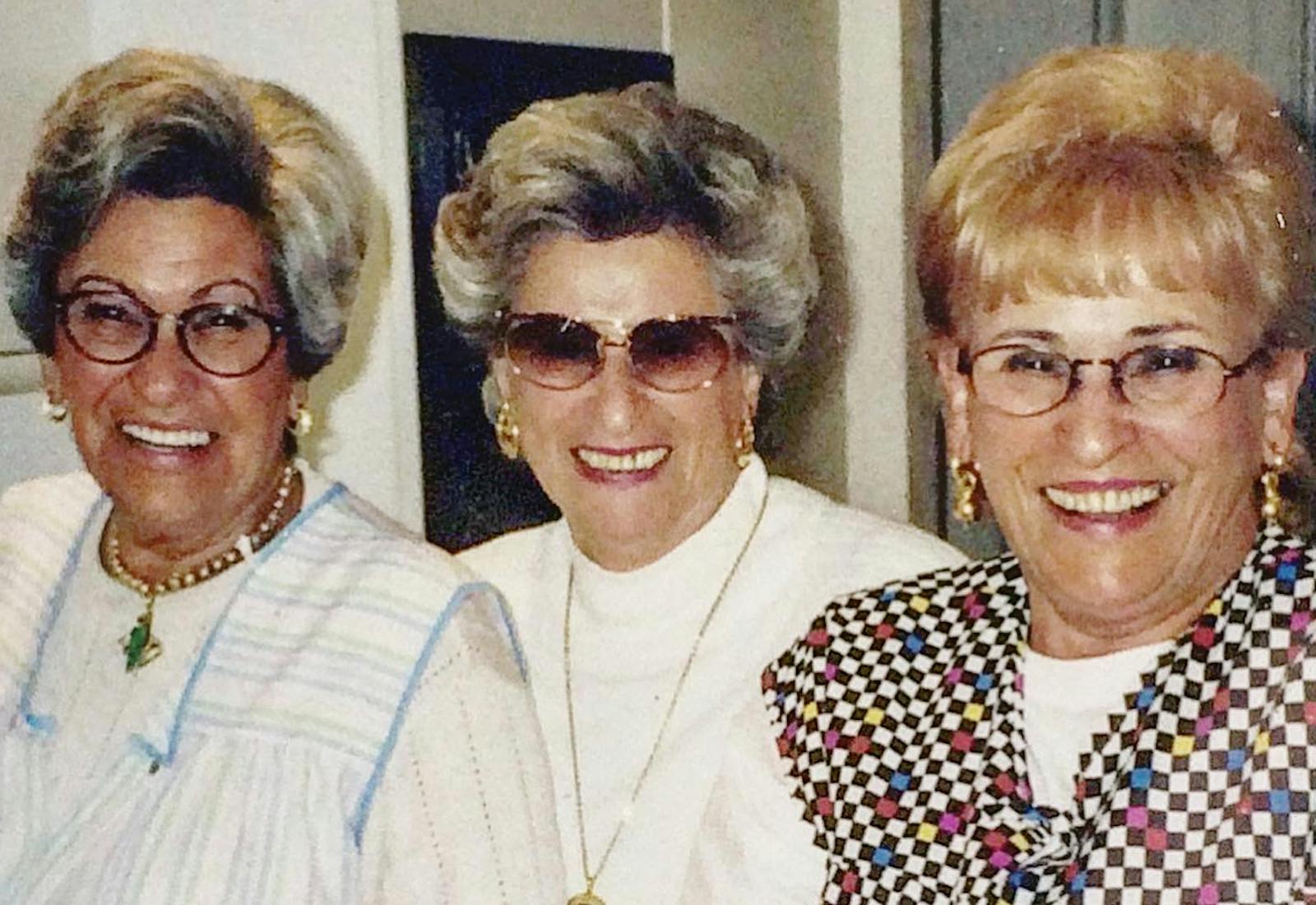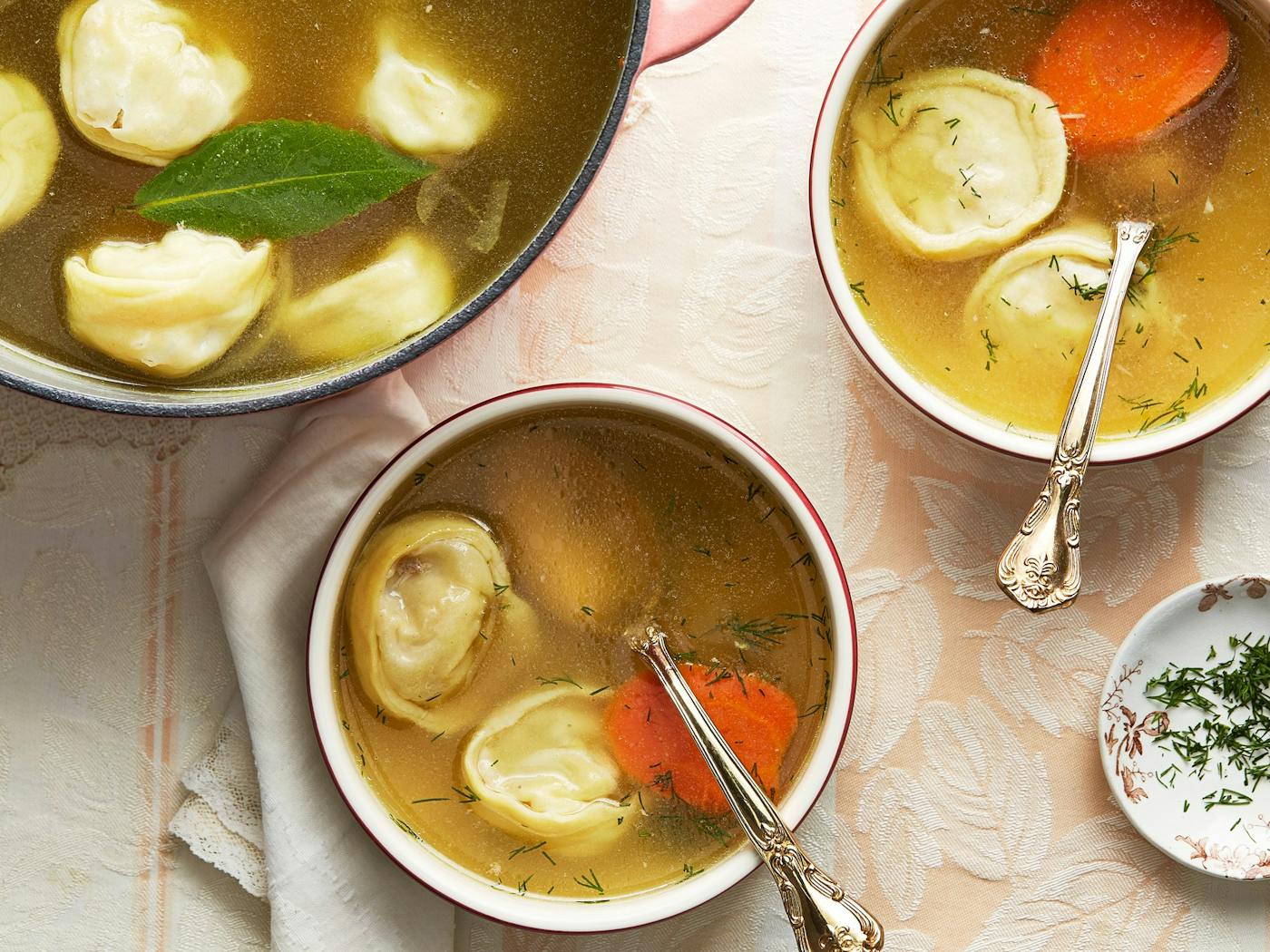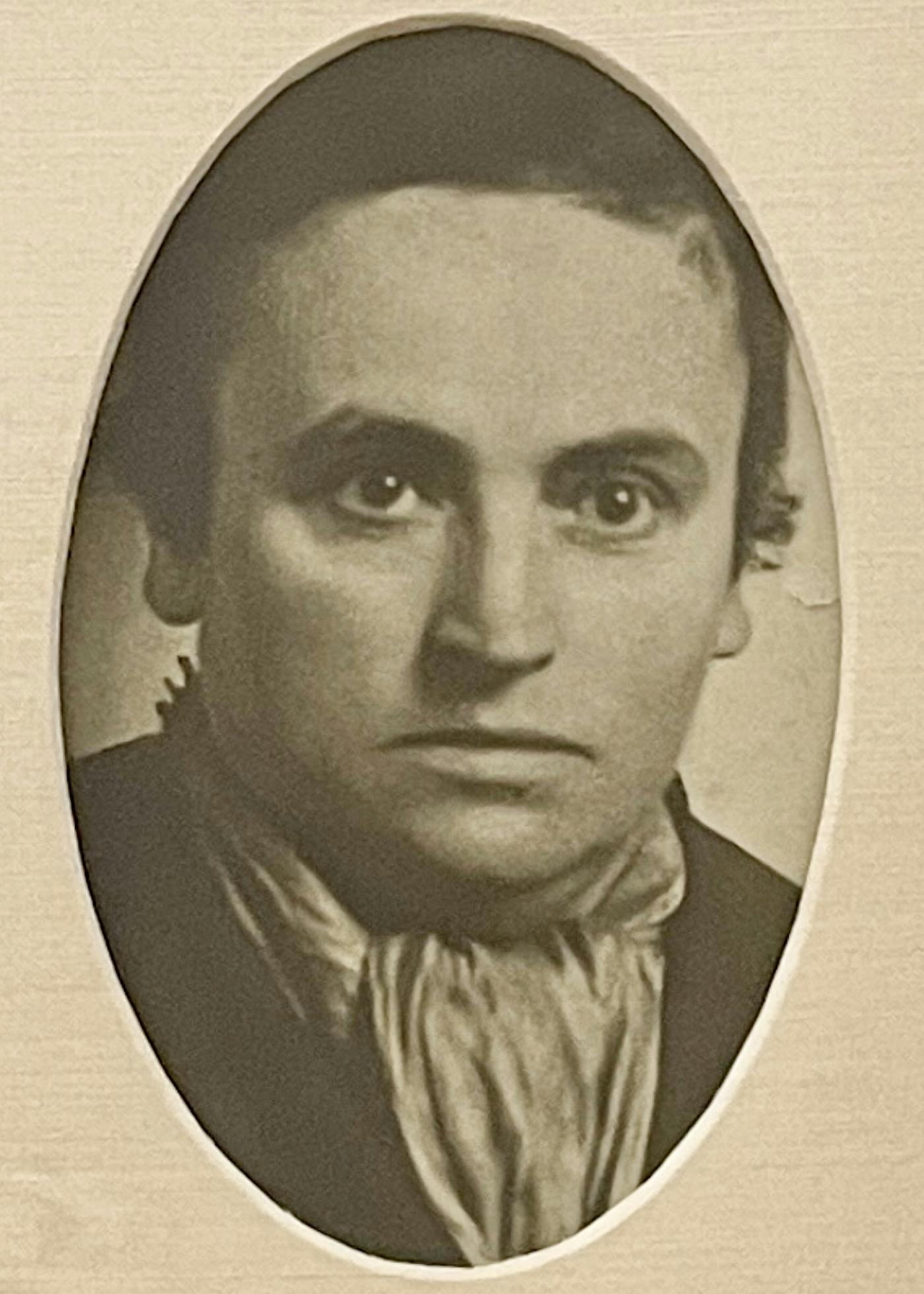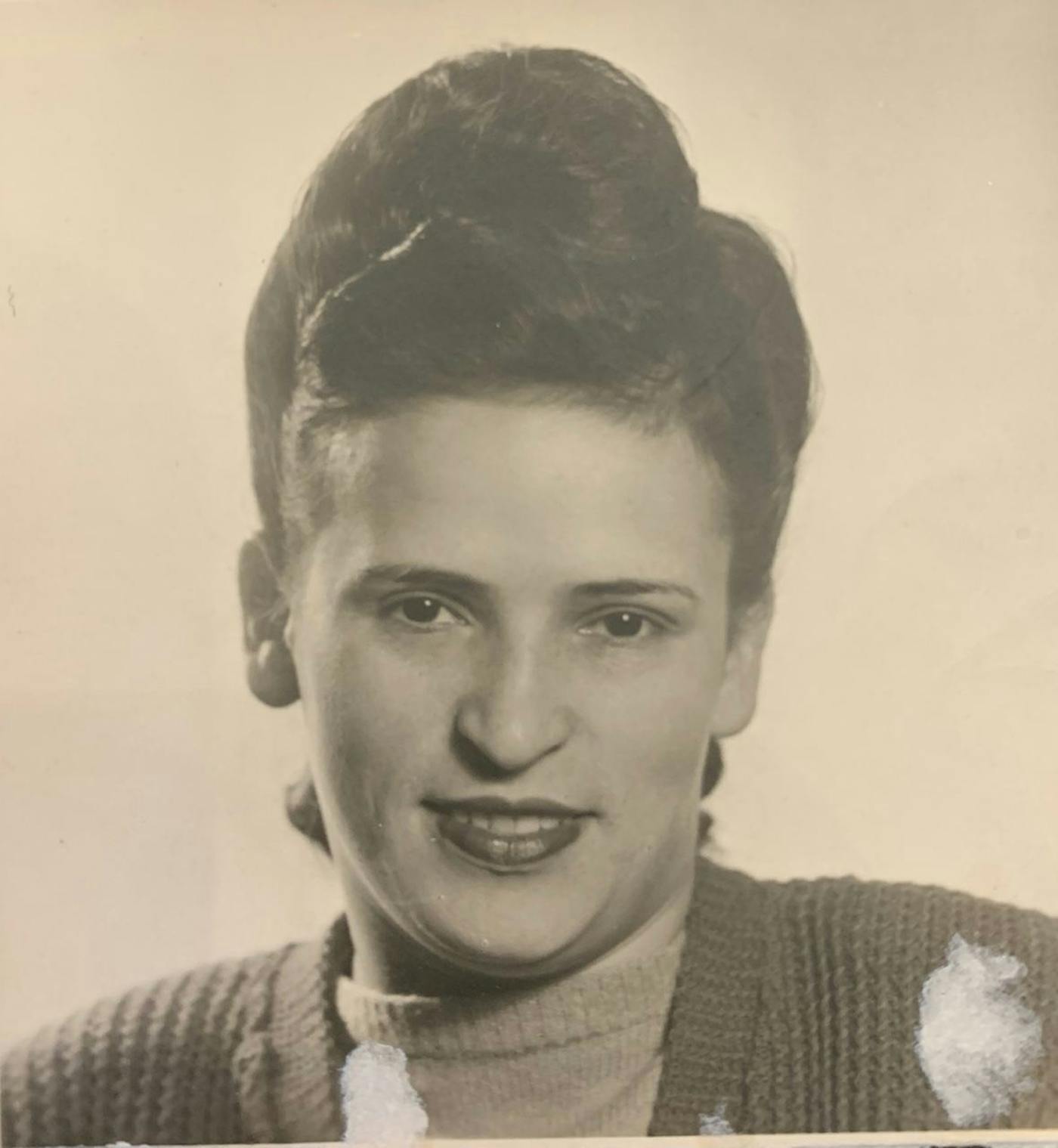Shared by Becca Gallick-Mitchell


Every Thanksgiving, Becca Gallick-Mitchell says she is tempted to carve the turkey poorly, leaving more meat on the bones. In her family, what’s left on the bird after the holiday dinner is the key to a five-generation strong recipe for kreplach, the classic Ashkenazi dumpling traditionally plunged into broth or fried with onions.
In the Polish town of Lodz, where the family lived before the Holocaust, Becca’s great-grandmother Esther often made her mother’s kreplach recipe for Shabbat dinner. A mother of seven children, Esther went into labor on a Friday in the early 1930s. The family was deeply religious, “so there was no option that Shabbat wasn’t going to happen,” Becca says. Mala, the third of Esther and Yoil’s children and Becca’s grandmother, was just seven- or eight-years-old at the time, but she had watched her mother make the kreplach enough times to know how to fill the dough with meat and carefully seal the pockets. She stepped in and made the family recipe on her own for the first time.
When the war broke out in 1939, the family scattered in the hopes of keeping everyone safe. Mala was sent to stay with her grandmother who ran a bakery, but the business had already been seized by the Nazis. Her younger brothers were taken by an uncle, while two sisters stayed with her mother. “At 15 [Mala] had to basically fend for herself,” explains Becca, who is a Holocaust educator. In Kozienice, a town west of Lodz, where Mala had spent time as a child, she found friends who became a family, living together in the ghetto there from 1939 to 1942. She assumed her parents and siblings had died, adds Becca. “She had no communication, no understanding of what was becoming of them.”
In 1942, while at a hospital for appendicitis, Mala overheard nurses saying the ghetto was going to be liquidated. Still groggy from anesthesia, she left the hospital and attempted to flee, making her way to a barn where her friends found her. Together, they were sent to a labor camp to make ammunition where Mala’s wound from her surgery became infected. To her shock, her supervisor, a Nazi named Gertrude Hoffman, agreed to help Mala, taking her home, cleaning her wound, and even offering to help her escape.
“My grandmother said ‘No,’” Becca shares. “She didn’t really know what would become of her. She wanted to stay with her group of friends,” in solidarity. Gertrude remained with Mala and her friends throughout the war, insisting they be transferred when she was. (After the war, Mala testified on Gertrude’s behalf in a trial where she was exonerated.)
In 1945, Mala was liberated and returned to Lodz. At a survivor’s bulletin board, she ran into Henry, who she had met once before the war. “It was hard to find people you knew, so it was that little spark that ultimately got them together,” says Becca. They married a few months later and in time, Mala learned that much of her family perished in the war, including her parents, but her sisters Rosa and Franka had survived. After seven years apart, she finally reunited with them.
They all immigrated to the U.S., where Becca remembers her grandmother and great-aunts cooking together, with Mala always in charge of the kreplach. She made them for High Holidays and with the leftovers from Thanksgiving, a holiday Mala and Henry adopted with passion. “They really had such a patriotism,” Becca explains. “They loved everything about America.”
For Becca, growing up, the kreplach was a dish she adored, but “I didn’t really know or appreciate the history behind them until much much later,” she says. It’s only in recent years that she asked her grandmother what her favorite recipe that survived the war is. As she replied "kreplach," she shared the story of how she made them on the night her mother went into labor. “It’s amazing how if you don’t ask your grandparents... what they lived through you don’t hear all these stories. I never heard this story growing up,” Becca explains.
By sharing the recipe, Becca adds, Mala, who is 97, feels it honors her mother Esther. It’s “a way to bring her back to life through other people’s kitchens...it’s giving someone who had their life taken away their life back.”


